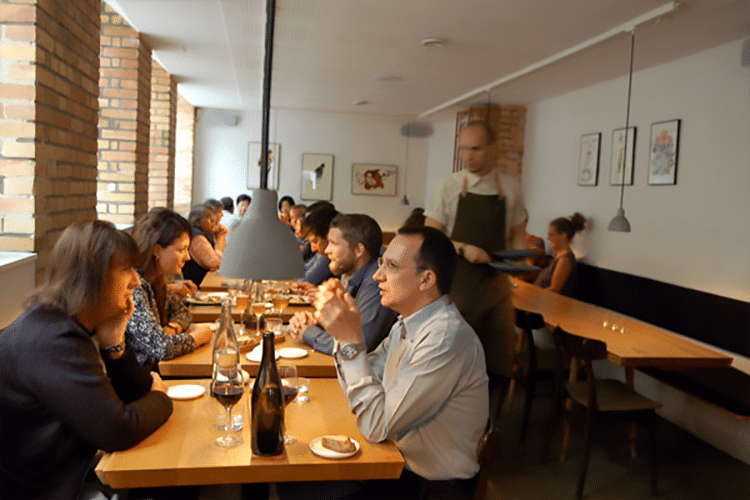Copenhagen. Center of the culinary universe. Wait. What?
Target Noma. Number one restaurant in the world, the place that singlehandedly launched the revolution in food now known as New Nordic. Would it be any good? Could the cuisine of the chilly north, known for foraging and sea creatures actually satisfy the palate? And would it cost an arm and a leg or just one limb?
The arrival at Noma is something akin to walking into a surprise party. I won’t ruin it for you but let’s just say, you’ve made it. You got up at 4am EST on the first Monday of the month and scored a table – they only have 12 each night. So the greeting, well, it’s kind of nice. You may be intimidated but sitting down to your table – “yours for the night” – your biggest problem will be whether your taste buds can keep up.
The meal at Noma is thrilling and startlingly devoid of meat products until approaching the finish line. What proceeds is a parade of dishes starting with a few tiny bites. Ours was turnip and unripe green strawberries. Turns out there is a period you can eat green strawberries early on in their development, and they are quite good. Every meal we had, this being June, would feature them.
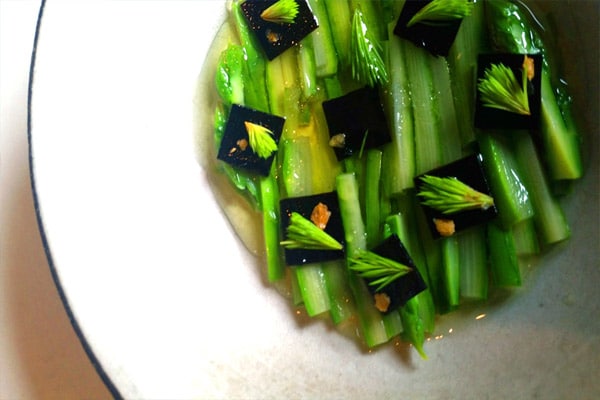
Some highlights of a truly fantastic meal. Green asparagus gets a briny assist from little cubes of seaweed. First shoots of the season sit atop a scallop fudge. Mahogany clam, which can live 200 years as evidenced by the concentric circles on their shells, comes barely cooked, cut in tiny slices. Amazing. Cabbage pressed into a shell of a sandwich. Monkfish liver cut into ribbons, cool and succulent. Lobster with nasturtium leaves. Reindeer moss covered in chocolate. Revelatory. The menu is 1700 kroner, a steal at about $250.
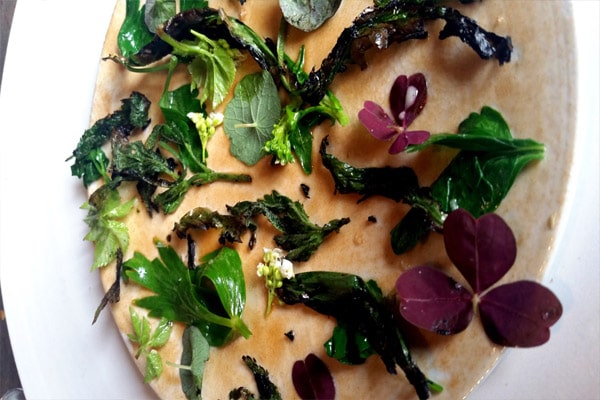
After dinner, which runs about 18 – 19 courses, you are invited to the kitchen where the operating language is English as cooks from around the world jockey to work here. They smile as they scrub. You step outside and see some herbs, then head upstairs. Here is the world famous test kitchen and more herbs growing under a glowing light.
Noma was our final meal in Copenhagen and our best. But others were uniformly good with just one dish mis-step in six meals. At each stop, the freshest seasonal produce abounded. We were concerned that the cuisine would be lacking in diversity, so seasonal that someone would be bound to repeat themselves. Yet it never happened.
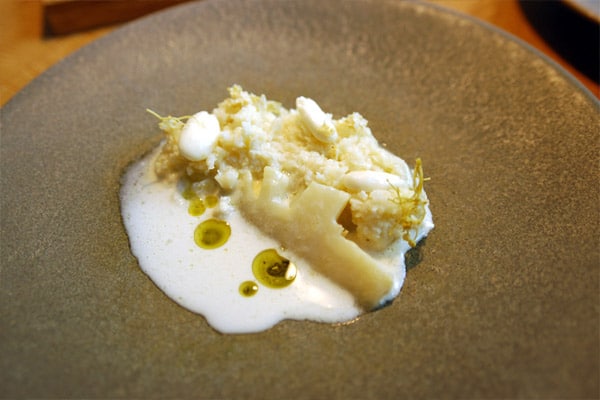
Another one of the World’s 50 Best Restaurants at number 45 on the most recent tally, Relae focuses on sustainability and vegetables. Everything is organic and the wine list is stunning, less pricey than Noma’s and just as in depth on all things natural. Here you choose from a 4 course menu for 450kr ($67) or 7 courses for 725 ($107). You can sit in the dining room or, as we preferred, take one of the high top tables near the front door to watch the open kitchen in action. Here we were wowed by impossibly tender cauliflower, pillowy beef tartare and beautifully cooked lamb. Only a dish of undercooked potatoes blemished an otherwise impeccable meal.
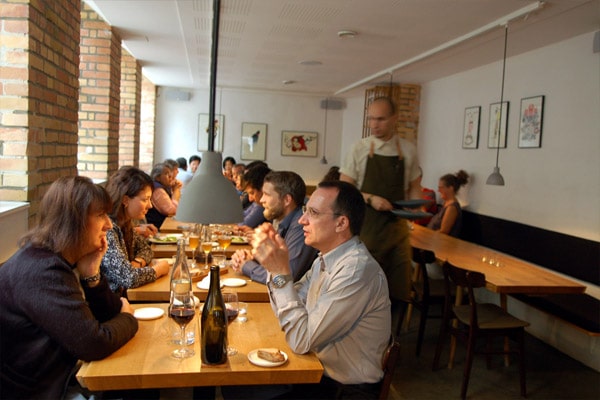
Across from Relae is Manfred’s, a more casual wine bar where the focus is squarely on organic and bio-dynamic producers. While you can have a meal here, I recommend you drop in before or after Relae and take a seat at the bar. If they have the Robinot sparkling wine from the Loire Valley, order it. If not, any of their suggestions will be just as good.
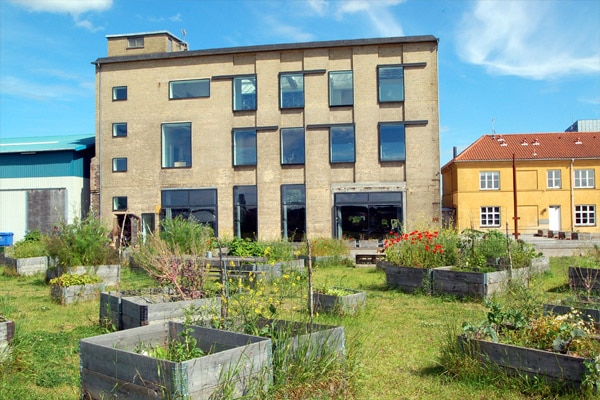
Few chefs on the planet have the pedigree of Amass chef/owner Matt Orlando. This guy has worked at the Fat Duck, Le Bernardin, Per Se and Noma. Not once, but twice. But the call of his own place brought him to what passes for an outer borough of tiny Copenhagen on a pier north of the Opera. You can arrive by ferry to Refshaleoen or by a bus to the end of the line. Here you will find a field with pitched tents with the restaurant beyond. From the ferry, you walk towards a warehouse building, passing by Amass’s herb and vegetable beds. Either way, you are definitely somewhere you have never been before. This spot, by the way, is number 66 on the World’s Best list if you are keeping score.
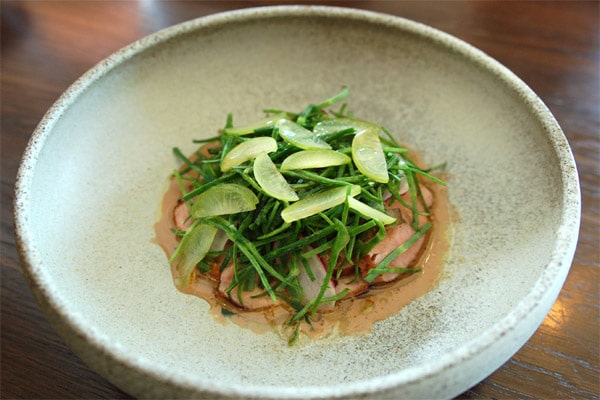
Inside, old school hip hop bounces off the concrete walls of the airy two story space. Order your meal and then dig into chewy potato bread with a side of fermented cabbage. Homey, delicious. The meal starts with a chip of salted celeriac topped with cod and sour cream, essentially the flavors of New Nordic cooking. Slices of white asparagus topped with slivers of green strawberry follow, earthiness meeting acidity. Egg yolk sits in the base of a bowl, embedded in briny sea kale and flowers. Succulent organic pork comes topped with orpine, an herb purported to have medicinal qualities, and unripe plums. Each dish introduces a new combination of flavors marrying the familiar and unfamiliar in perfect harmony.

Copenhagen’s cocktail scene showcases Nordic spirits like aquavit and herbs. Tucked into a building housing, among other things, the Georgian Embassy, Ruby sits just off a canal in the Old Town. Here the drinks are complex with layers of flavor built with an array of international spirits. To welcome summer, we enjoyed the Sloshed Vicar, a punch featuring strawberry-infused rosé wine, Vulson White Rhino Rye from the Alps, lemon juice and chamomile, and the refreshing Cynar Spritz, taking the bitterness of Cynar and marrying it with an herbaceous dill aquavit, elderflower cordial and splash of Champagne.
A few years ago, Ruby’s owners opened Lidkoeb in the suddenly fashionable Vesterbro district, formerly the red light district. While we could lament the loss of these seedy areas to hipsters, galleries and foreign tourists, if the result is the three-story cocktail fantasy lab known as Lidkoeb, we’ll take it. More classic than Ruby, the emphasis on brown spirits hit the spot. We enjoyed a dark boozy Rapscallion with smoky single malt scotch and sherry and the lighter, perfect-for-a-summer-evening Paper Plane made with Four Roses bourbon, Aperol and Gran Classico. To end the night, one of the owners showed us around the third floor, which is dedicated to whiskey and open only on weekends.
With a nip of some rare rye to warm us, we departed into the Copenhagen night, satiated once more on the flavors of city’s dynamic restaurant scene and the amazing hospitality of its residents.
Noma
Strandgade 93
Relae
Jægersborggade 41
http://www.restaurant-relae.dk/
Manfreds
Jægersborggade 40
Amass
Refshalevej 153
http://www.amassrestaurant.com
Ruby
Nybrogade 10
Lidkoeb
Vesterbrogade 72B

